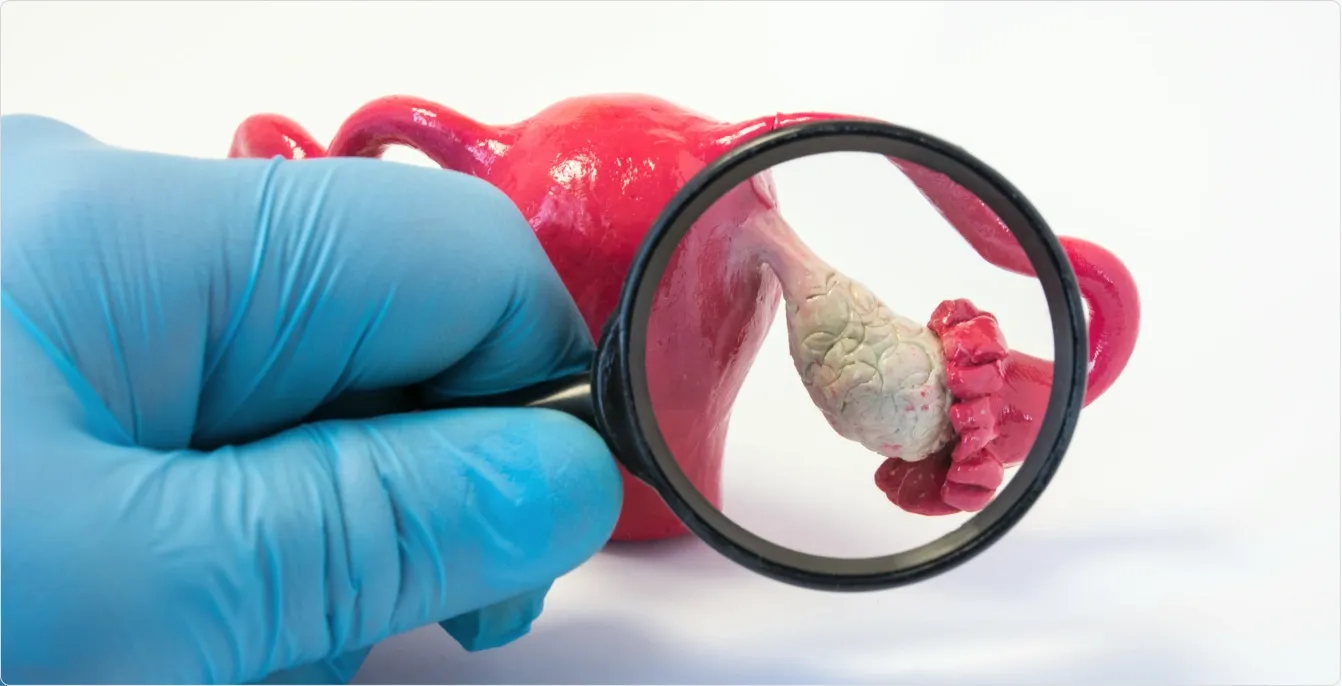
Many women will develop ovarian cysts during their lifetime, with a majority being benign cysts that resolve their own. Overall, however, ovarian cysts can differ in size, type, symptoms and nature. Knowing what to look out for and going for regular well-woman check-ups can ensure timely detection and management.
What Are Ovarian Cysts?
Ovarian cysts are fluid-filled sacs or semi-solid masses that develop within the ovary or on its surface. This condition is relatively common in women of reproductive age and occurs when ovulation is disrupted or the egg is not released properly.
Most ovarian cysts are small and benign, causing no symptoms (asymptomatic), and will resolve on their own without treatment. Typically, women are unaware that they have a cyst unless their doctor detects one during routine pelvic exams or imaging studies.
In other cases, ovarian cysts may persist or grow over time and present uncomfortable symptoms. While rare, there is also a slight risk of malignancy, which may require surgery.
What Are the Types of Ovarian Cysts?
Some of the most common types of ovarian cysts include:
Functional Cysts: These are benign growths that develop during the menstrual cycle, which can disappear naturally within two to three months and do not require medical intervention. Functional cysts can be divided into two types:
Follicle Cysts: These cysts develop when the follicle fails to break open and release an egg during ovulation but instead continues to grow and becomes a cyst.
Corpus Luteum Cysts: These growths occur when blood or other fluid builds up inside the corpus luteum, a temporary collection of hormone-producing cells that helps prepare the uterus for pregnancy.
Endometriomas: Also known as chocolate cysts, they contain dark brown fluid and usually form in women with endometriosis, a condition where endometrial tissue grows outside the uterus (womb).
Dermoid Cysts: These cysts, also known as teratomas, are formed from embryonic cells containing fully mature tissues, such as hair, teeth, or skin. They are typically present at birth and grow gradually over time.
Cystadenomas: These benign tumours originate from the cells lining the outer surface of the ovary. They are typically filled with either a watery fluid (serous) or a mucus-like substance (mucin).
What Causes Ovarian Cysts?
The cause of ovarian cysts usually depends on the type of cyst. Possible causes include:
Ovulation: Each month, the ovaries release an egg during ovulation. A cyst may appear if the egg release process is disrupted or the follicle fails to rupture properly.
Endometriosis: Women with more serious endometriosis may experience endometrioma cysts, which can cause discomfort during menstruation or sexual intercourse.
Pelvic Inflammatory Disease (PID): A severe infection in the pelvic area can spread between the ovaries and the fallopian tube, potentially leading to pus-filled cysts.
Abnormal Cell Growth: In some cases, ovarian cysts like dermoid and cystadenoma may develop when ovarian cells multiply in an atypical manner.
What Are the Risk Factors for Ovarian Cysts?
Common factors that increase the risk of developing ovarian cysts include:
Age: Ovarian cysts are more common during the childbearing years, typically between the ages of 20 and 40.
Hormonal Problems: Women who have medical conditions that affect the hormones, such as polycystic ovary syndrome (PCOS), thyroid disorders, or are undergoing certain fertility treatments, are more prone to developing cysts.
Pregnancy: Elevated levels of hormones (particularly human chorionic gonadotropin (hCG) and progesterone) may lead to the persistence of growth of produce corpus luteum cysts.
History of Ovarian Cysts: Women who previously experienced ovarian cysts may be at higher risk of developing them again in the future.
Signs & Symptoms of Ovarian Cysts
Smaller cysts do not cause noticeable symptoms. However, when the cysts become enlarged, they can sometimes cause signs and symptoms such as:
- Pelvic pain or pressure (ranging from dull and heavy to sudden and sharp)
- Abdominal bloating or swelling (distension)
- Painful periods
- Nausea or vomiting
- Pain during sexual intercourse
- Difficulty emptying one’s bowels
- Unusual vaginal bleeding
- Frequent urination
- Dull ache in the back
- Irregular periods, heavy periods, or lighter periods than usual
How Are Ovarian Cysts Diagnosed?
Your gynaecologist will usually start with a pelvic examination, which includes palpating the pelvic or lower abdominal area to check for any lumps or masses in that region.
To confirm the presence of ovarian cysts, other tests may be performed, including:
Medication: Doctors may recommend non-steroidal anti-inflammatory drugs (NSAIDs) to relieve the pain caused by ovarian cysts. Hormonal therapies like birth control pills can help regulate hormone levels and prevent the growth of new ovarian cysts, although they cannot shrink an existing cyst.
Surgery: If the ovarian cyst is larger than 5 cm, causes persistent symptoms, or is suspected to be cancerous, the doctor may recommend removing the cyst surgically through:
Cystectomy: This procedure involves removing the cyst while leaving the ovarian tissue intact to maintain reproductive and hormonal function in pre-menopausal women.
Oophorectomy: This procedure involves the removal of one (unilateral) or both ovaries (bilateral)
Salpingo-oophprectomy: This involves the removal of the ovary and the fallopian tube, which may be necessary if the cyst involves both structures or if there is a risk of malignancy.



